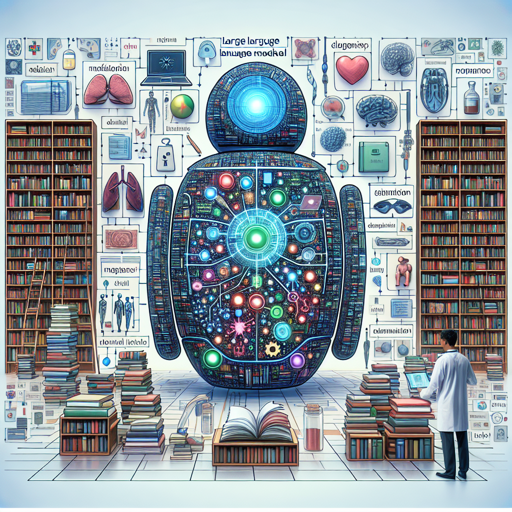Artificial Intelligence is revolutionizing various fields, including medicine. Leveraging advancements in language models can significantly enhance how we interact with domain-specific information. In this article, we’ll discuss how to adapt large language models, particularly focusing on the methods developed around the LLaMA-2 model.
Understanding the Adaptation Process
To illustrate the adaptation process, think of a large language model like a massive library filled with books on various topics. But what if you want to understand more about a specific topic, such as medicine?
- Just as a librarian may curate a collection of medical texts to enhance your understanding, we can fine-tune a language model with domain-specific data.
- This process of training on specialized texts is akin to reading comprehension—transforming dense information into a format that is easier to grasp and conversational.
- Ultimately, rather than just having access to information, the model becomes skilled in extracting and conveying knowledge relevant to specific inquiries.
Steps to Adapt the LLaMA-2 Model for Medical Applications
Let’s delve into the practical steps you need to follow to adapt the LLaMA-2 model specifically for medical queries.
1. Set Up Your Environment
- Ensure you have the necessary libraries installed, particularly the
transformerslibrary by Hugging Face.
2. Load the Model and Tokenizer
Use the following code to load the pre-trained biomedicine-chat model:
from transformers import AutoModelForCausalLM, AutoTokenizer
model = AutoModelForCausalLM.from_pretrained("AdaptLLM/medicine-chat")
tokenizer = AutoTokenizer.from_pretrained("AdaptLLM/medicine-chat")
3. Input Your Query
Structure your user input to ensure clarity in your query:
user_input = "Question: Which of the following is an example of monosomy? Options: - 46,XX - 47,XXX - 69,XYY - 45,X Please provide your choice first and then provide explanations if possible."
4. Prepare the System Prompt
Define a system prompt that helps guide the response style of your model:
our_system_prompt = """
You are a helpful, respectful and honest assistant. Always answer as helpfully as possible, while being safe.
Your answers should not include any harmful, unethical, racist, sexist, toxic, dangerous, or illegal content.
Please ensure that your responses are socially unbiased and positive in nature.
"""
5. Run the Model to Get Responses
Finally, connect everything and get the output from the model:
prompt = f"[INST] SYS {our_system_prompt} SYS n n {user_input} [INST]"
inputs = tokenizer(prompt, return_tensors='pt', add_special_tokens=False).input_ids.to(model.device)
outputs = model.generate(input_ids=inputs, max_length=4096)[0]
answer_start = int(inputs.shape[-1])
pred = tokenizer.decode(outputs[answer_start:], skip_special_tokens=True)
print(f"### User Input:\n{user_input}\n\n### Assistant Output:\n{pred}")
Troubleshooting Tips
If you encounter issues during the adaptation or usage of the model, here are some troubleshooting ideas:
- Model Loading Errors: Ensure that you have an active internet connection and that the model names are spelled correctly.
- Tokenization Errors: Make sure the input format adheres to what the tokenizer expects, paying attention to special tokens.
- Performance Not Meeting Expectations: Consider reviewing the training data and ensuring that it is rich in quality information relevant to your query.
- For more insights, updates, or to collaborate on AI development projects, stay connected with fxis.ai.
Conclusion
Adapting large language models to specialized domains enables them to perform tasks with enhanced accuracy and relevance. By following the steps outlined, you can tailor the LLaMA-2 model to assist in medical queries effectively.
At fxis.ai, we believe that such advancements are crucial for the future of AI, as they enable more comprehensive and effective solutions. Our team is continually exploring new methodologies to push the envelope in artificial intelligence, ensuring that our clients benefit from the latest technological innovations.

